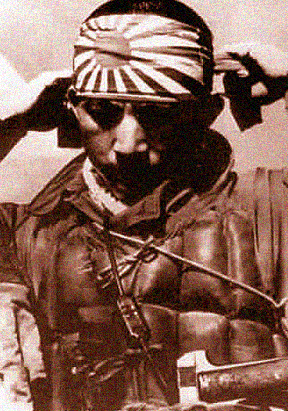
Story Highlights
- historical event:
- The word “kamikaze” can roughly be translated as “divine wind” and was originally the name of the great typhoons which saved Japan from Mongol invasions at the time of Kublai Khan, in 1274 and 1281.
On this day, the Japanese conducted their first kamikaze attack in World War II. This took place in late 1944, when Japan was already in full retreat before the more powerful Americans. In fact, Japan had failed to defeat the Americans in any major battle since the time of the Battle of Midway in mid 1942. This state of affairs actually continued to the very end of the war. The use of kamikaze was an indicator of the desperate state of the Japanese armed forces.
The word “kamikaze” can roughly be translated as “divine wind” and was originally the name of the great typhoons which saved Japan from Mongol invasions at the time of Kublai Khan, in 1274 and 1281. Kublai Khan was a powerful Mongol ruler, the heir of Genghis Khan, who ruled a vast empire in China and Central Asia. Kublai Khan’s court and state were described by the famous traveler Marco Polo. The ambitious Kublai Khan also tried to conquer Japan, but the islands were saved by powerful typhoon winds, which the Japanese named the “kamikaze” (divine wind) in gratitude.
The first kamikaze attack was performed on this day in 1944. It took place during the Battle of the Leyte Gulf on the Philippines (this was possibly the greatest naval battle in history). The first victim of a kamikaze attack was the Australian heavy cruiser HMAS Australia (around 10,000 tons displacement and 192 meters in length). The Japanese plane crashed into the front part of the ship, killing around 30 people and wounding a further 64. The captain, Emile Dechaineux, was among the dead.




